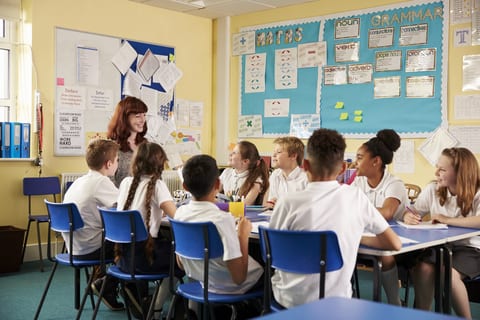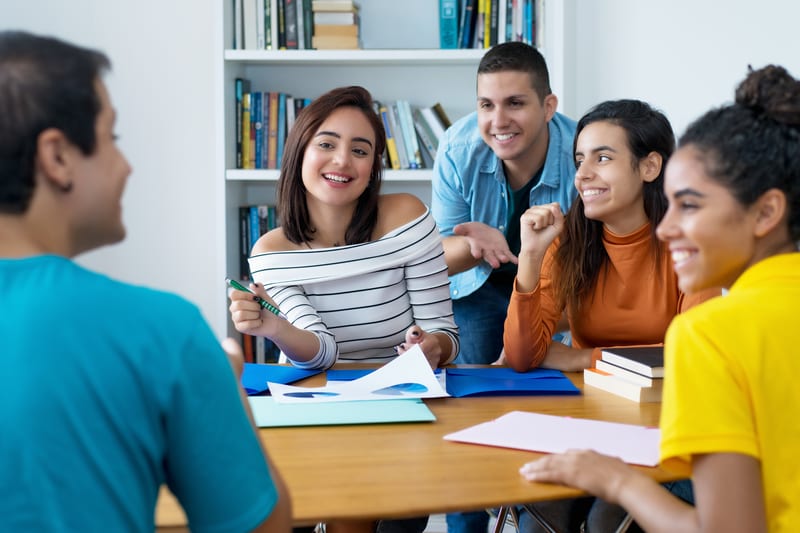There are many ways to connect Population Education lessons and resources into your International Baccalaureate (IB) class this school year, whether you teach in the primary, middle or diploma years’ program. We have resources that encourage students to inquire, be knowledgeable, think beyond themselves, care about the world around them and be open minded to other opinions, which are all attributes in the IB Learner Profile.

Ideas for Your IB Primary Years Classroom
Population Education lessons can easily be integrated into your Primary Years classroom. In the PYP, students “build a sense of community and awareness for the opinions, values and needs of others.” Here are three lesson plans that help support the PYP curriculum framework.
• Go Fish – students work cooperatively to solve the problem of distributing limited resources within a community and identify ways to promote sharing with each other.
• What Would You Do? – students work on their communication skills by considering several environmental and social dilemmas and discussing the consequences of various reactions.
• Helping Hands – students read and discuss a story about people coming together to help one another, and then work to plan a school event to help others in their community.
Ideas for Your IB Middle Years Classroom
The Middle Years Program (MYP) builds student understanding of themselves, their responsibilities, and their roles in their community and world. The MYP focuses on “teaching and learning in context” where it is important for students to understand “their common humanity and shared guardianship of the planet.” One of the central ways that students achieve this is through exploring “globalization and sustainability” and many PopEd lessons support this goal. Here are two MYP activities that would fit in both science and social studies classes, with some bonus English language arts and math too.
• For the Common Good – great for math, science, and social studies. This lesson has students think about their individual consumption, how it impacts resource distribution, and identify strategies that would produce a sustainable use of resources through a simulated game.
• Who Polluted the Potomac? – great for English language arts, science, and social studies. Here students experience the pollution of a local river over time through an interactive story and propose methods to protect the river from current and future pollution.
The MYP also asks students to complete a community service project where they apply what they have learned in the classroom. A great complement to this project is our World of 8 Billion student video contest. Students can apply what they have learned in their community service project to an authentic audience, connecting how a global challenge related to population growth can be solved.

Ideas for Your IB Diploma Years Classroom
There are numerous ways that Population Education can be incorporated into the Diploma Program (DP), especially if you teach Geography or Environmental Systems and Societies. First, Diploma students in both courses would benefit from the World of 8 Billion student video contest where they’ll demonstrate their learning in a creative, interactive and unique way!
For the IB Geography course population concepts can be woven into the course throughout the year but the “geographic perspectives – global change” component of the syllabus aligns perfectly. Here are two lesson plans that help support teaching global change:
• Tale of 3 Megacities – students analyze data and images about three megacities, identifying challenges and benefits of growing urbanization, and compare and contrast social, political, economic, and environmental issues across the cities.
• In Search of Sustainable Life – students develop an index of the ten factors they identify as most important to a sustainable community and develop models for measuring those factors.
Because the Environmental Systems and Societies course focuses on how the natural world and society interact, there are so many standards that connect to lessons in PopEd’s Earth Matters curriculum pack. Here are two lesson plans to get you started with teaching population concepts in the IB Environmental Systems and Societies course:
• Carbon Crunch – students use a timeline to explore energy-related environmental issues through history then compare countries based on their CO2 emissions and their climate vulnerabilities.
• Needs and Wants in a Finite World – students discuss the varying levels of human needs and then evaluate their own needs and wants and the resources required to meet them.
PopEd is a Great Match for All Levels of IB
Teaching about how we interact with each other and shape the world around us in a growing population is important to include in your IB curriculum, whether you teach in the primary years’, middle years’ or diploma years’ program. I hope you found some unique teaching ideas you can use in your IB classroom this school year!
Image credits: Elementary students at table (ID 76294815 ©Monkey Business Images, Dreamstime.com); Group of students talking (ID 170383128 ©Kadettmann, Dreamstime.com)


